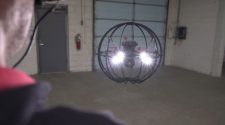Receiving feedback is important. Actually listening to feedback and taking it into consideration is even more important. Covering adult autism concerns from the perspective of both a father and writer makes one susceptible to blind spots, as personal desires can obscure objectivity. Writing about future events for today’s autistic kids is needed, even advantageous in some instances. However, there are adults with autism who are living life without support in all the areas we dream of for our children. In fact, adults on the spectrum today have lived their entire lives being ridiculed, misunderstood, belittled, and cast aside as less than. In short, the future is now for many adults as they wait anxiously for the day that society will deliver on the promise of equality for all people. Their challenges include insufficient housing options and continued job discrimination. Granted, strides have been made on some fronts as related to the lives of autistic adults, but the enormity of unfulfilled needs is stupendous.
Housing for autistic adults is a serious problem that needs our immediate attention. Attempting to place autistic adults with sensory issues and communication difficulties in a general residential setting for seniors simply does not work. Further, assisted living facilities lacking autism training have proven to be inadequate substitutes for focused intervention encompassing a holistic approach. Best practices is only an industry buzzword, having minimal effect, until appropriate residences for autistic adults is a priority. Appropriate housing for autistic adults must not be “cookie cutter” high rise facilities that serve only to provide a roof and three meals a day.
The undertaking to design the perfect autism residential community is no easy task. However, degree of difficulty should not be a deterrent to initiating a design that is duplicable and seeks to address this most pressing concern. Employment opportunities for autistic adults is the hot topic of discussion, and rightfully so, but its fallacy to believe anyone will perform at optimal level, without the benefits of a safe and comfortable home.
We salute the benevolent men and women who support autism causes at various levels. Housing models catering to the needs of autistic adults have come on the scene in the past few years with mixed results. They are, for the most part, community based programs focused on providing socialization and job venues for residents. Additionally, the existing residential models do an excellent job of addressing sensory issues within the living quarters. The areas of lighting, noise, security, and to some extent, job training, have been admirably addressed. Admittedly, there are tremendous benefits generated from autistic adult housing up to this point. The problem with this approach to housing is twofold.
First, the sheer scale of providing supportive housing for autistic adults is massive. Even the best intentions have barely scratched the surface as so many people are left behind due to a lack of availability to residential options. With approximately 50,000 autistic teens transitioning to adulthood each year, now is the time to think big – along with having a plan that can be duplicated on an international basis. The second issue has to do with job preparation for adults on the spectrum. There are a number of programs focused on improving dismal statistics surrounding the autism employment rate.
Unfortunately, most companies are not prepared to hire and manage autistic employees. Again, there must be uniform training standards established for companies desiring to work with the autism community in order to implement change. Standardization of care for residents living in the community is desperately needed to implement change to this rapidly growing need. We need a collaborative effort from non profits, the private sector, and governmental agencies with the necessary financial resources to accomplish this goal. The one thing we can no longer afford to do is procrastinate. The clock is ticking and its only getting louder.















